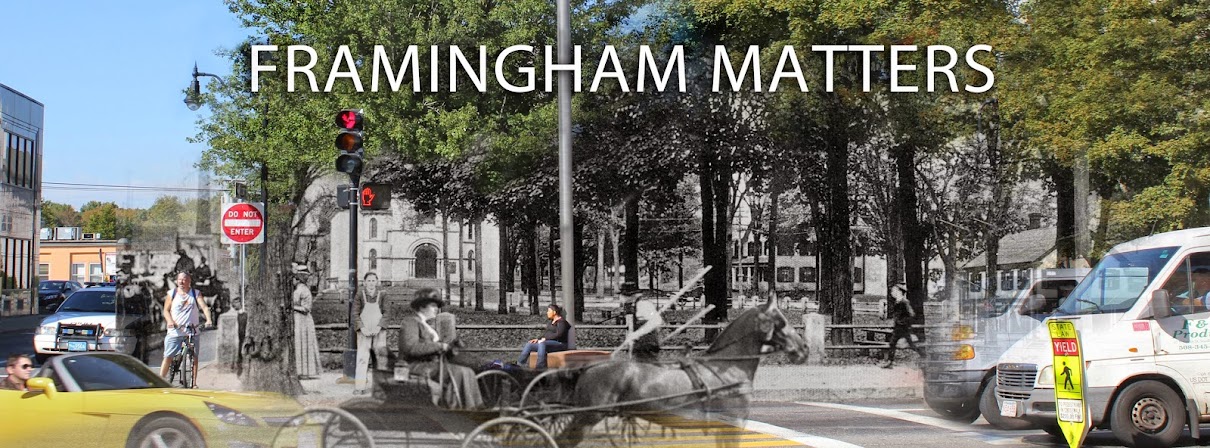 |
| Construction of the Sudbury Aqueduct 1875-1878 |
The conduit was designed to slope downward at 1 foot per mile southeasterly from Farm Pond into Sherborn, easterly to Natick, Wellesley, Needham and finally to the Chestnut Hill Reservoir near Cleveland Circle in Brookline. The aqueduct was designed to carry water from the watershed of the Sudbury River to Boston and its surrounding communities. The system was designed to transmit 80 million gallons in 24 hours—a factor of two more than the source was to provide—to allow for future needs.
At a number of places along the aqueduct are small buildings built to house control equipment of various sorts. These include a gate house at Farm Pond (abandoned after a channel was constructed feeding the aqueduct from Framingham Reservoir #1 due to poor water quality at Farm Pond), a metering house in southeastern Framingham, and control houses over weirs where the aqueduct crosses over other bodies of water. These control points allow water from the aqueduct to be diverted into the watersheds it crosses.
 |
| Partial Aqueduct route from Cedar and Waverly Streets to Irving and Herbert Streets. The Aqueduct trail continues from this point to Leland Street and into Sherborn. |
 | ||||
| Looking northward at the Sudbury Aqueduct from Leland Street. Opening the aqueduct route would provide area residents a pleasant walking path to downtown Framingham. |
 |
| Gate House at Leland Street |
The MWRA was created in 1985 and assumed sewage and wastewater treatment functions from the former MDC (Metropolitan District Commission), now the DCR (Department of Conservation and Recreation), which still maintains the watershed lands.
Guidlines for Public Access to Commonwealth Lands under the Care and Control of MWRA.
While under the care and control of MWRA, the goal is to protect and preserve existing lands for water supply purposes. MWRA recognizes the importance of enhancing public access and public involvement in its facilities as a means of improving its own performance in facilities maintenance and building support from its ratepayers.


